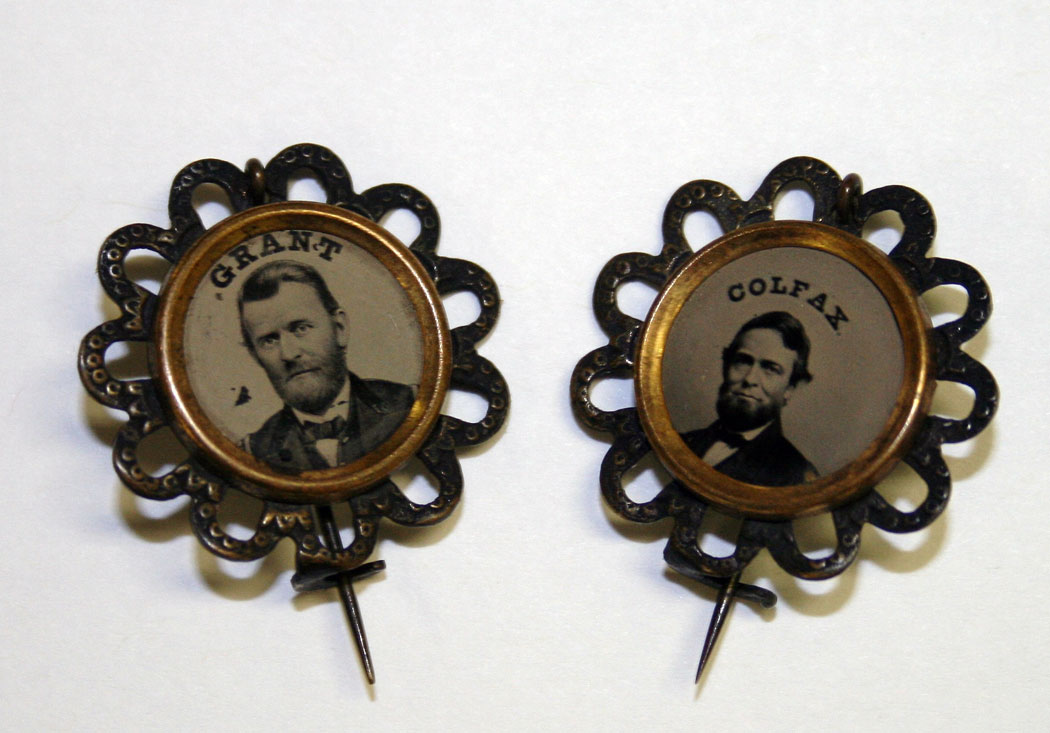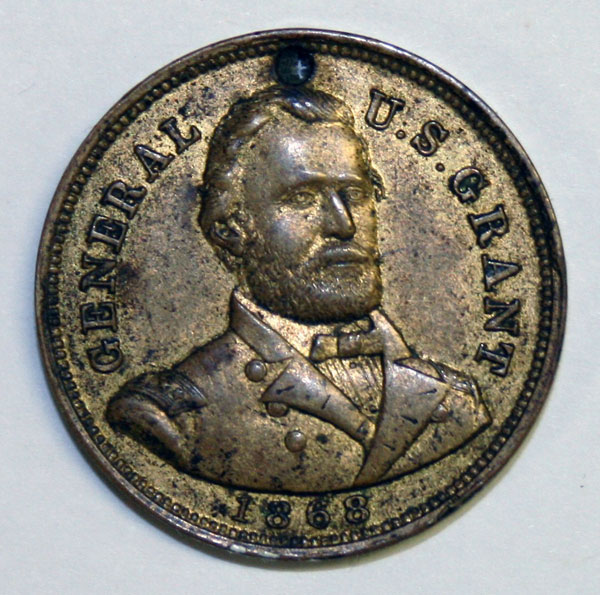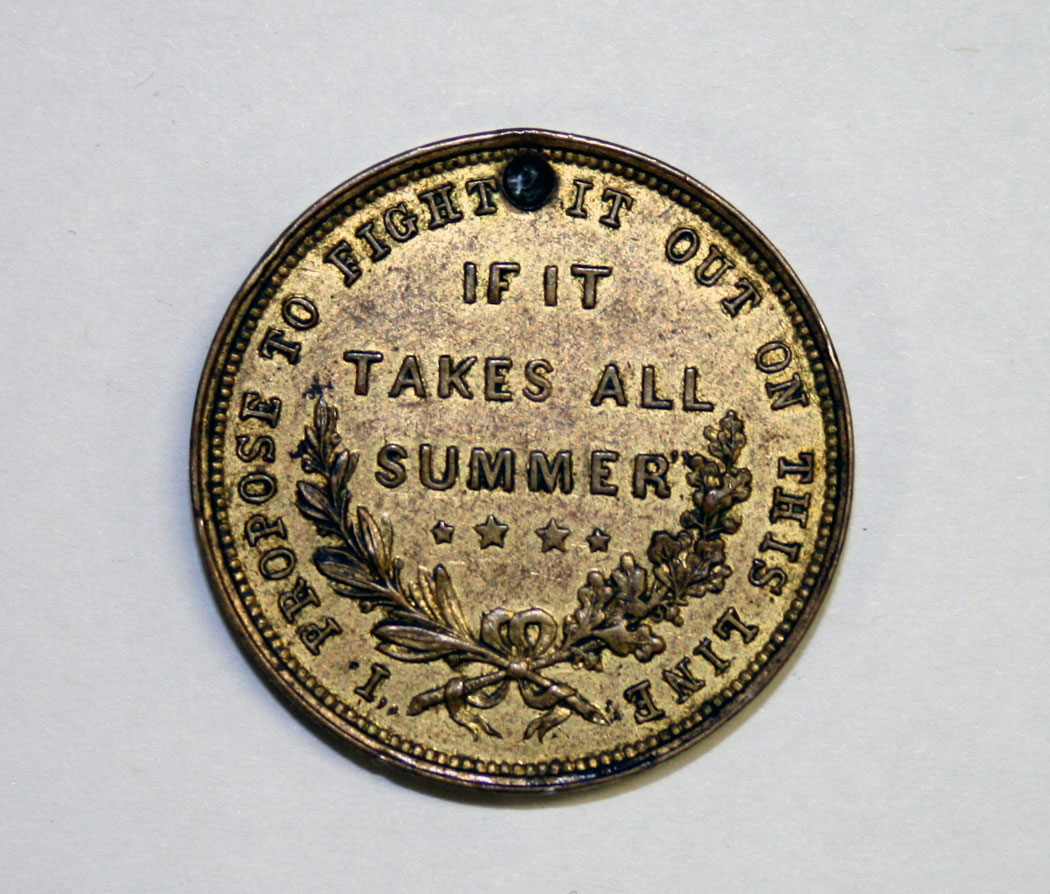
Campaign Buttons from the 1868 Presidential Election
JEFF-1548, 1947 and 1948
Since America is now in the throes of the 2012 Presidential campaign and election, it seems like an appropriate time to discuss examples of campaign buttons from the Jefferson National Expansion collection. The park has some fascinating examples from one of the lesser-known elections in American history, the Presidential election of 1868, when General Ulysses S. Grant ran against Horatio Seymour. This election was the first presidential election to take place after the Civil War. The incumbent President, Andrew Johnson, who succeeded to the Presidency after Abraham Lincoln was assassinated, was wildly unpopular, and narrowly avoided being removed from office in an impeachment attempt by Congress in 1868. Johnson was a Democrat chosen by Lincoln because he was a loyal Union man from a border state, Tennessee. Even Johnson's own party did not want him to continue in office, but there was great disagreement as to who should run. After numerous ballots, the Democrats nominated New Yorker, Horatio Seymour, to take on Ulysses Grant, who, at that time, was one of the most popular men in the North due to his efforts in concluding the Civil War successfully.

Seymour initially refused the nomination. At least three other candidates all wanted the nomination, but they worked against one another and deadlocked the convention. After 22 ballots with no candidate, several states, led by Ohio, threw their votes to Seymour, who remained a reluctant candidate even after being nominated. General Francis P. Blair was nominated for vice-president on the first ballot. As Governor of New York Seymour had been an ardent opponent of Lincoln's policies during the Civil War, especially opposing the draft, which made him popular with immigrant groups like the Irish.
In contrast to the divided Democrats, during the Republican Convention Ulysses S. Grant was chosen by acclimation on the first ballot. House Speaker Schuyler Colfax, a Radical Republican was nominated for Vice President on the 6th ballot. Although the popular vote for the two candidates was very close, Seymour lost by a large margin in the Electoral College, with Grant receiving 214 votes and Seymour 80.
Within the park's artifact collection are some interesting campaign buttons from that election. Political buttons date as far back as President George Washington, and they have taken many forms as the technology to create an image and mass production has allowed. In the late 18th and early 19th century, buttons were sewn-on clothing. The first example from the artifact collection is a pair of small brass buttons, one with a ferrotype portrait of Ulysses Grant with "GRANT" above the picture and the other with a ferrotype portrait of his running mate, Schuyler Colfax with "COLFAX" above the picture. The two portraits are each framed by a solid brass colored ring surrounded by a scalloped cut-out design with a vertical pin hinged at the top with a hook at the bottom. The first photographic image on pins dates to 1860.Campaign buttons for Abraham Lincoln and his various opponents were made using the tintype or ferrotype photo process. Another example of a campaign button from this election is a round campaign button which looks like a coin. On the obverse is a portrait of U.S. Grant in the center surrounded by the words, "General U.S. Grant 1868". On the reverse, is a laurel wreath surrounded by the words, "I propose to Fight it out on this Line/If it/takes all/summer", Grant's famous battlefield quote originally written in a letter to Lincoln on May 11, 1864. The campaign buttons from 1868 are an interesting reference to America's political history.

